










Zoo hours: Nov. 1-Feb. 28, 9:30 a.m.-2:30 p.m. weekdays. 9:30 a.m.-4:30 p.m. weekends.
Zoological Society office hours: Daily, 9 a.m.-4:30 p.m.
Society Office holiday hours: The Zoological Society offices will be closed on Nov. 26 for Thanksgiving, Dec. 25 and Jan. 1. The office will remain open from 9:30 a.m. until 2:30 p.m. on Dec. 24. Visit us online at zoopass.com, anytime.
Payment information at Zoo admission gates: The Milwaukee County Zoo staff does not accept checks for Zoo Pass purchases or renewal payments at the Zoo’s admission gates. Please contact our office at 414-258-2333 if you would like to schedule a time to pick up or purchase a Zoo Pass or Sponsor an Animal gift package.
Tax-deductible portions for the Zoo Pass categories are:
Individual (Basic: $90, Plus: $106)
Individual +1 or Couple (Basic: $105, Plus: $120)
Individual +2, Family or Single Adult Family (Basic: $115, Plus: $135)
Family +1 (Basic: $135, Plus: $144)
Family +2 (Basic: $141, Plus: $153)
Family +3 (Basic: $157, Plus: $166)
Affiliate (Basic: $189, Plus: $192)
Benefactor (Basic: $253, Plus: $255)
A gift Zoo Pass is fully tax deductible for the donor.
Now just one, 2-hour session! 4-6 p.m. (Check-in starts at 3 p.m.)
Zoom over to the Zoo for a Zumba® session you’ll never forget. Zumba® Fitness Party at the Zoo is perfect for people of all skill levels to come together for a vibrant workout that also helps the Zoological Society. Money raised at this event supports the Sponsor an Animal program.

Due to recent feedback, we are changing this event from two sessions to one longer rockin’ event. The workout is led by Zumba Jammer™ Rachel Beimel and local Zumba Fitness instructors. You’ll feel energized by the music, instructors and the mission.
Cost: $20 per person if registered by Nov. 12. $25 at the door if tickets are still available.
Reciprocal zoos and aquariums: We update our list of zoos and aquariums that offer reduced or free admission to our members with the Association of Zoos & Aquariums each year. We only reciprocate with AZAaccredited facilities and reserve the right to not reciprocate with zoos and aquariums located within close proximity of the Milwaukee County Zoo. Please be sure to contact our office prior to your travels at 414258-2333, or visit zoosociety.org/Reciprocal if you have any questions.
Moving? Please call us when you change your address or name. The call saves us money because when the post office returns your mail with a forwarding address, we pay twice for mailing: to the old address and the new. If you’ve changed your address on your identification, replacement cards may be purchased with the new information for $5.
Instead of decking the halls with boughs of holly, local children will deck our trees with animal-themed creations. The Fantastic Forest is a community event that allows local youth groups to handmake animal-themed ornaments and then decorate a tree inside the Zoo. Around 60 youth groups will participate in bringing a little extra cheer to the holiday season.
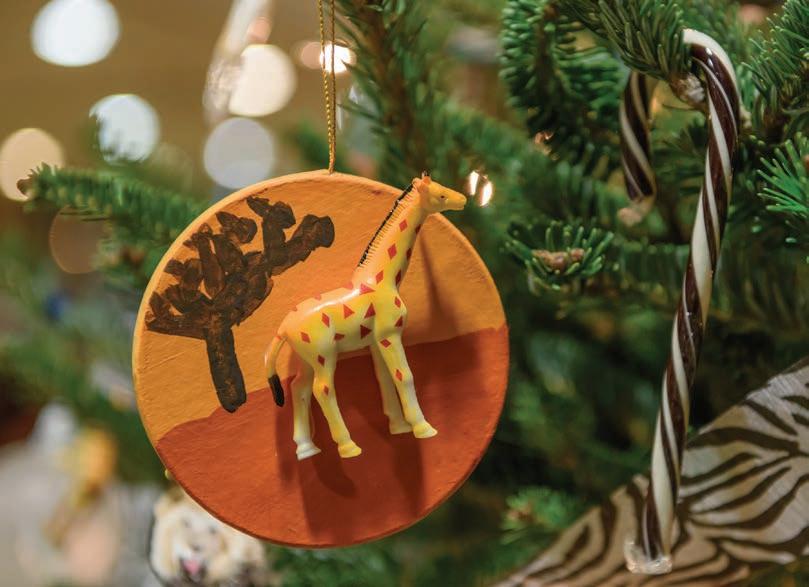
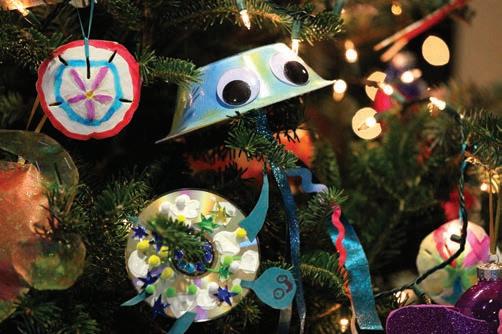
Zoo guests will be able to see the highly creative ornaments and trees throughout the month of December. You might see a paper plate transform into a polar bear or popsicle sticks glued to form a penguin. The Fantastic Forest is a great opportunity for local youth to learn about animals, use their imagination, show off their work and engage the community.
If you are interested in signing up your youth group or learning more about the Fantastic Forest, go to zoosociety.org/FantasticForest.
Issue No. 160, Nov.-Dec. 2022

Wild Things is a membership newsletter published by the Zoological Society of Milwaukee five times a year.
Editor & Writer: Katie Krecklow
Designer: Scott DuChateau
Photos taken by Garrett Hopkins unless otherwise noted.
Contact the Zoological Society at: 10005 W. Bluemound Rd., Milwaukee, WI 53226 Phone: 414-258-2333 Web: zoosociety.org
Contact the Milwaukee County Zoo at: 10001 W. Bluemound Rd., Milwaukee, WI 53226 Phone: 414-256-5412 Web: milwaukeezoo.org
These trees will also be visible during the Zoo’s Wild Lights event.
Turn the page to read more about the nighttime event.
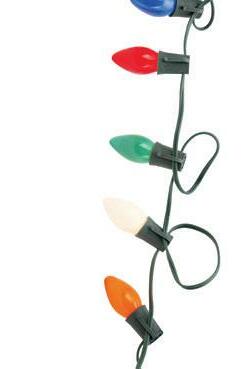

When the sun sets this December, the Zoo will only get brighter! Wild Lights is back with its holiday light display. More lights, more animal figures and more fun. The one-mile walk includes several themed zones that will delight people of all ages. Enjoy a winter woodland ride on the North Shore Bank Safari Train or pick your favorite animal to ride on the Penzeys Carousel (weather depending).
On Dec. 8 and 9, adults 21 and older can enjoy a special version of Wild Lights. In addition to the magic of the lights around the Zoo, there will be specialty cocktails and food for sale along with entertainment. These two nights are only for adults 21 and older.
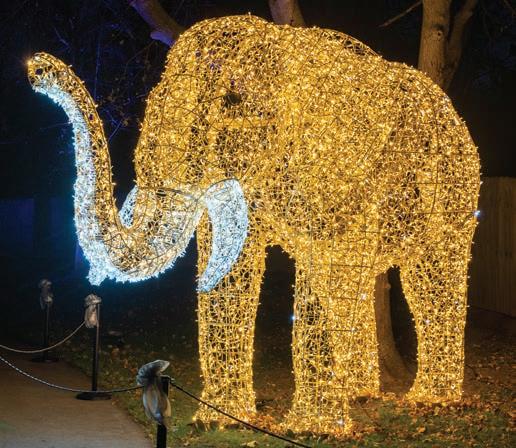









I am thankful for the many fantastic Zoo Pride volunteers who donate so much of their time to help create an educational and enjoyable experience for all of our Zoo guests. I also greatly appreciate all of the animal watch work they do. Without them, we would be lost!
– Cassie Niedermeyer, Aviary ZookeeperI am thankful for all the gueststhat choose to visit the Zoo! Visitingthe Zoo supports our animal careand conservation efforts. We thankeach guest and Zoo member thatchoose to share their days withus. We are delighted to help makememories that last a lifetime!
– Becky Danes,Zoo Admissions & ExperiencesAs Thanksgiving approaches, employees of the Milwaukee County Zoo and the Zoological Society of Milwaukee wanted to share what they are thankful for this year.
I’m thankful for co-workers (two- and four-legged) that make coming to work more than just a job. We spend most of our weekdays, weekends and holidays with them. Our jobs are exciting, and most of us have dreamed of this since we were little. Over time, the time spent away from family can be hard. But these people and animals make it a little less so.
– Katie Kuhn, Big Cat SupervisorI’m thankful for the sweet angel babies – known to most people as the cows!
– Bridget Carpenter, Family Farm Zookeeper
I am thankful for Zoo guests who choose to Round Up for Conservation at Zoo cash registers. From 20152021, nearly $257,000 has been provided to wildlife conservation and research projects supported by this program.
I’m thankful for the extraordinarypeople, including our boards, staff,donors and volunteers, who care sodeeply and work so hard to fulfillour mission. We couldn’t do itwithout you!
– Jodi Gibson, Zoological SocietyPresident & CEO
– Kari Williams, Zoo Conservation Research Sustainability CoordinatorI am thankful that BOTH of our otter moms are fantastic, dedicated, loving, attentive, awesome parents! Way to go Shamrock and Clover; you could not have done a better job!
– Rhonda Crenshaw, Small Mammals Supervisor
I’m thankful for browse and the team who helps provide it. It’s the most nutritious and the most fun food for our giraffes to have. Not only do they love it, but I love seeing them enjoy it.
– Joan Stasica, Giraffe/Hippo SupervisorI am grateful for the aquaticand reptile team that hascome together and shownwhat can be accomplished withcommunication and teamwork.
– Shawn AquaticMiller, & Reptile CuratorI am thankful to work in a place where I can get outside and enjoy the animals on my lunch break.
– Maria Pinto, Zoo Administration








I’m thankful for the Winter Quarters zookeepers being team players and being willing to help each other out to give our animals the best care we can.
– Danielle Faucett, Winter Quarters Supervisor
I’m thankful for the Project SEARCH program at the Zoo. Without the program and DVR (Division of Vocational Rehabilitation), I would not have a full-time job at the Zoological Society.
– Jordon Cotter, Data Analysis Assistant
I am thankful for the entire animal care team at the Zoo for their dedication and devotion to the animals. I see firsthand the commitment, passion and hard work that goes into caring for the animals 24/7.
I’m thankful that we have such greatkeepers who are passionate about theirjob and take such wonderful care ofour animals. They speak from a perchof credibility and make quite theimpression on our donors and guests.
– Penny ZoologicalGutekunst, Society Vice Presidentof DevelopmentWhile the animals may not be able to say what they are thankful for, we’d like to think they would give thanks to generous supporters like you. Want to give your favorite Zoo animal something extra special for the holidays? Consider donating to the Giving Tree during the month of December. Visitors can choose an ornament for their favorite animal and either purchase the requested item themselves or make a monetary donation for the Zoo to purchase the item on their behalf. Items may include bubbles, blankets or perfumes. Check out the tree inside the U.S. Bank Gathering Place this holiday season.
– Jennifer Diliberti-Shea, Zoo Public Relations Manager
Take your pal and your confidant to meet the Golden Girls of the Small Mammals Building. Dorothy, Rose and Blanche are three dwarf mongooses that arrived in summer. (Yes, mongooses is the plural of mongoose, not mongeese.) While the three animals are named after the characters of the hit show “The Golden Girls”, the similarities end there. When they first arrived, Rose was a bit of a bully and picked on Dorothy. They have gotten over that hump and get along well now. All three are very active and can be seen climbing on branches, boxes and other objects in their habitat; digging in the sand or using a puzzle feeder.
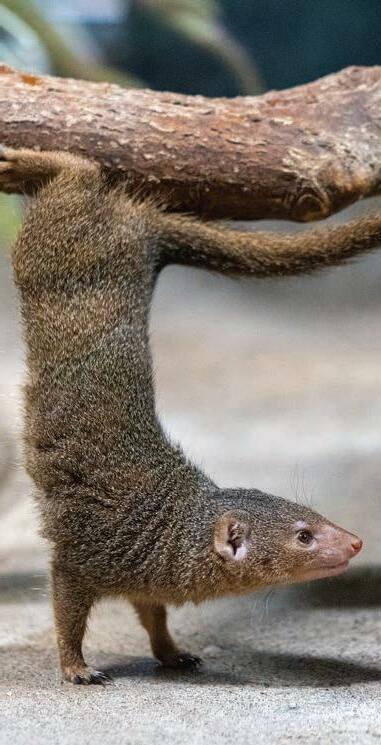
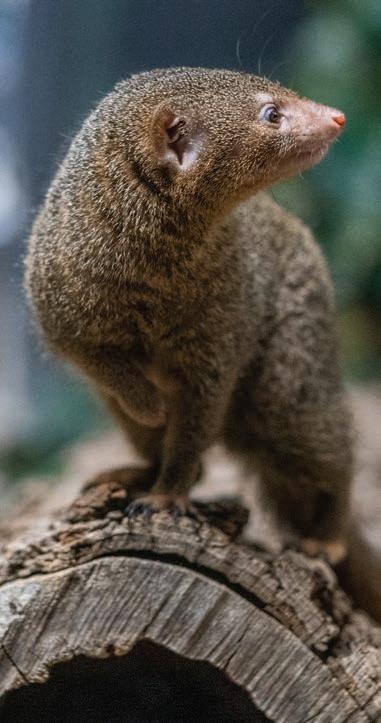

Dorothy, Rose and Blanche are sisters and came to Milwaukee from the Lincoln Park Zoo in Chicago. They turned 8 years old in October. They each weigh less than one pound, averaging about 12 ounces. While they are tiny and adorable, they are also hunters and very territorial. The dwarf mongoose is the smallest African carnivore. In the wild, they eat insects, including beetles, grasshoppers, spiders, scorpions, small vertebrates and eggs. While they are primarily considered carnivores, they do eat the occasional fruit or vegetable. When it is mealtime in the wild, the mongoose and hornbill have a great friendship. The mongoose will often scare out some insects for the hornbill to eat, and the hornbill will alert the mongoose if a predator is coming. Mongooses are social, and the average pack includes about 12 but can be as large as 30. When you visit the Golden Girls at the Zoo you will most likely see them snuggling together, climbing or just being cute. You will find them in the habitat right before the nocturnal side of the building.

We know you’re excited about our classes, and we want to make your child’s educational experience rewarding. Please read and familiarize yourself with important information, such as our health and safety precautions and general classroom policies on the last page.

Age infant–2 with one adult $20 Zoo Pass members $30 non-members
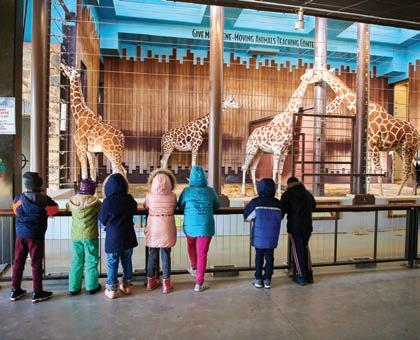
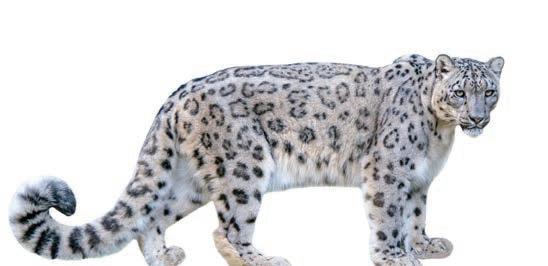
Stroll through the Zoo on these guided tours designed specifically for oneon-one learning time for you and your child! Programs feature songs, puppets, stories and more. We recommend wearing close-toed shoes, warm clothing and bringing your stroller along. All classes begin in the atrium of the Conservation Education building. Tours take place outside rain or shine.
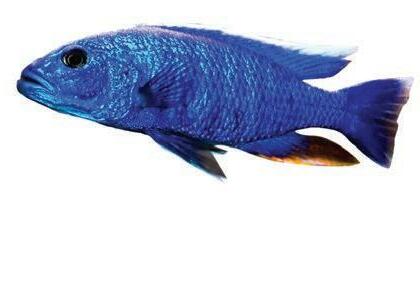

Discover the sounds and colors of birds at the Zoo’s aviary. From black-and-white penguins to blue-and-yellow starlings, there are so many colors to see! Hear the squawk of the rhinoceros hornbill and learn a finger-play to practice color recognition with your little “chick.”
8:45-9:45 a.m.
Feb. 2, 3, 5, 7, 10, 11, 15, 17, 23 10:15-11:15 a.m.

Feb. 3, 5, 7, 11, 17, 23
Let’s go exploring to find our feline friends! Visit the big cats (and one that is small) as we have some furry fun. Practice pattern recognition, read a tiger book and learn a lion lullaby you can sing with your little “cub.”

8:45-9:45 a.m.
Mar. 2, 3, 5, 7, 10, 15, 16, 17, 18
10:15-11:15 a.m.
Mar. 3, 5, 7, 10, 16, 18
Take a stroll as we visit some of the largest animals in the Zoo. Sing and rhyme as we learn about the long trunk of the elephant, the purple tongue of the giraffe, and the huge toes of the hippo. Can you help your little “calf” find their nose, toes and tongue, too?
10:15-11:15 a.m.8:45-9:45 a.m.
Mar. 23, 24, 25, 26, 31 Apr. 7, 12, 14 Mar. 24, 25, 26, 31 Apr. 7, 12, 14
Dé un paseo mientras visitamos algunos de los animales más grandes del zoológico. Cante y rime mientras aprendemos sobre la gran trompa del elefante, la lengua morada de la jirafa y los enormes dedos de los pies del hipopótamo. ¿Puedes ayudar a tu pequeñín a encontrar la nariz, los dedos de los pies y la lengua también?
8:45-9:45 a.m.
Abr. 1, 15, 16
10:15-11:15 a.m.
Abr. 1, 15, 16
$30 Zoo Pass members $40 non-memberswith one adult

One, two, three, four! Join us in our backyard classroom to practice counting. Read a counting book and make a crazy carousel animal you can pretend to ride. Then, “round and round and round we’ll go” as we take a ride on the Penzeys Carousel.
8:45-9:45 a.m.
Apr. 27, 28, 29, 30 May 3, 5, 6, 7, 11, 12, 13
10:15-11:15 a.m.
Apr. 28, 29, 30 May 3, 5, 6, 7, 11, 12, 13
$37 Zoo Pass members $47 non-memberswith one adult
Leap into our African savanna classroom to learn more about lions! Stalk and pounce like a lion in your lion costume. Then, prowl over to the Florence Mila Borchert Big Cat Country to see the Zoo’s pride of lions.
8:45-10:15 a.m.
Jan. 19, 20, 21, 22, 24, 25, 27 Feb. 2, 3
11a.m.-12:30 p.m.
Jan. 20, 21, 22, 24 Feb. 2
Have tons of fun learning about the Zoo’s largest animal, the elephant! Create an elephant costume with enormous ears, a long trunk and a fly-swatting tail. Practice moving like an elephant, and then stomp over to see the Zoo’s elephant herd.
8:45-10:15 a.m.
Feb. 16, 18, 21, 24, 26 Mar. 2, 3, 8
11a.m.-12:30 p.m.
Feb. 18, 21, 24, 26 Mar. 2, 8
Explore our ocean classroom to learn the differences between seals and sea lions. Create your own sea lion costume and hunt for fish in a kelp forest. Splash into the Zoo to learn how zookeepers work with the seals, and then watch them in action!
8:45-10:15 a.m.
Mar. 23, 24, 26, 28 Apr. 1, 6, 7, 12
11a.m.-12:30 p.m.
Mar. 24, 26, 28 Apr. 1, 6, 7
Sign
$45
your

Journey through the rainforest, dive into the ocean and search the savanna as we learn about some amazing creatures that call these places home. Travel around the classroom in search of ocean food for a hammerhead shark and collect leaves for a giraffe in the savanna. Create your own globetrotting passport and collect animal stickers on our expedition through the Zoo.
1-3:15 p.m.9:15-11:30 a.m.
Feb. 17, 18, 19Feb. 18, 19
1-3:15 p.m.9:15-11:30 a.m.
Jan. 20, 21, ,22, 28, 29 Feb. 5, 10, 11 Jan. 21, ,22, 28, 29 Feb. 5, 11
Enter our animal-hospital classroom to practice the jobs of a veterinarian and create your own vet kit. At the cardiology station, check the heartbeat of a pretend kangaroo. At the lab station, view samples under a microscope. Then, we’ll go to the Animal Health Center to peek into a real exam room and learn how animals are cared for at the Zoo.
9:15-11:30 a.m.
Mar. 31 Apr. 1, 2, 5
1-3:15 p.m.
Apr. 1, 2
9:15-11:30 a.m.
Feb. 24, 25, 26 Mar. 5, 10, 18, 19, 25 1-3:15 p.m.
Feb. 25, 26 Mar. 5, 18, 19, 25
How big is a newborn koala? How tall is a baby giraffe? Find out these answers and more as we learn fun facts about animal babies and their families. Create an animal-baby memory game. Then, head into the Zoo to see if we can spot any new arrivals.
9:15-11:30 a.m.
May 5, 6, 7 May 6, 7 1-3:15 p.m.
9:15-11:30 a.m. With Adult
Apr. 14, 15, 16, 22, 29, 30 May 12, 13
1-3:15 p.m.
Apr. 15, 16, 22, 29, 30 May 13
Photo by Bob Wickland“This is the best day ever!” – Class ParticipantPhoto by Paul Ruffolo
$45 Zoo Pass members $55 non-memberschild only
A blue whale’s heart is about the size of a small car! A hummingbird’s heart is about the size of a grain of rice! Visit the Animal Health Center and learn how we check on the hearts of animals at the Zoo. Your heart will skip a beat when you create a “heart” to take home.
Ages 8 & 9
Why are some animals hunters while others are hunted? Discover how different animals interact with one another and what it means to be predator or prey. Learn more about animal relationships as we tour the Zoo and have a close encounter with an animal ambassador!
$45 Zoo Pass members $55 non-memberschild only
Conservation is a worldwide issue, but sometimes the biggest steps we take happen much closer to home. We’ll learn how to help wildlife in Wisconsin and take home some projects to bring the wilderness to your backyard!
9:15-11:45 a.m.
$45 Zoo Pass members $55 non-memberschild only

Take an in-depth look at the anatomy of mammals! Examine bone structure and learn what mammals have in common and how they are different.
1–3:30 p.m.
Feb. 25 Mar. 19
9:15-11:45 a.m.
Ages 6 & 7 Feb. 5, 11 1–3:30 p.m.
Jan. 28, 29 Feb. 5, 11
1–3:30 p.m.
Jan. 28, 29
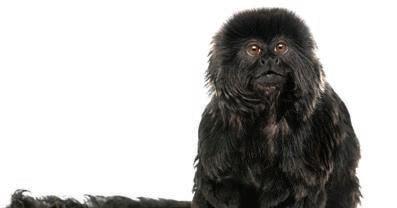
Ages 8 & 9
9:15-11:45 a.m.
Ages 6 & 7 Mar. 5, 18
1–3:30 p.m.
Feb. 25 Mar. 19
Feb. 25. 26 Mar. 5, 18
1–3:30 p.m.
Feb. 25, 26
What do monkeys and apes have in common? They are both primates! Practice becoming a primatologist – a scientist who studies primates – as you observe the Zoo’s apes and monkeys in action. Discover amazing primate adaptations like balancing in the trees like a spider monkey and using a rock to crack open a “nut” like a chimpanzee. You’ll have a swinging good time learning about some of our closest relatives in the animal kingdom!
1–3:30 p.m.9:15-11:45


Apr. 15, 16, 30 May 6 Apr. 15, 16
$200 Zoo Pass members $230 non-memberschild only

Join us during Spring Break for three fun-filled days where we will learn, create and imagine around the Zoo! Campers will use art and science to gain a deeper understanding of their favorite animals at the Zoo.
Member online registration begins November 9 at 9 a.m. Non-member registration begins November 16 at 9 a.m.
• Participants must be the appropriate age for a given class and no unregistered children may attend (including siblings). Exceptions on age are only made for children with special needs (please call Education prior to registration).
9 a.m.-3 p.m.
$20 Zoo
members
While we welcome family members of all ages, the content of this class is intended for children ages 3-12. Minimum of two registrants required and must include one adult (18 years or older) and one child. Children under the age of 1 are free to attend and do not need to be registered.
Like the globe-trotters on the TV show, “Amazing Race,” you can travel “around the world” in this family class! Take off on a scavenger hunt through the Zoo to find some of its “oddest” animals. Discover how animals use their senses to survive as you test your own senses through family challenges and roadblocks. Don’t delay … the challenges await you!
Photo by Bob Wickland Mar. 29-31 Apr. 3-5
Have you ever wondered what your family can do to protect the Earth? In celebration of Earth Day on April 22, come learn about amazing animals, tiny or humongous, that live on this Earth and what a harmonious Earth provides us with. Walk away from this class with actions you can take to help protect our Earth a little more.
• If your child is attending a child-only class, an adult (18 years or older) must check the child in and provide the following information: emergency phone number, allergies/medications and names of adults authorized for pickup
• Only authorized adults with valid identification may pick up children.
• In addition, please do not meet or follow your child’s group into the Zoo, as this is a distraction to the educational experience.
1-3:15 p.m.
Feb. 19 Mar. 25, 26
9:15-11:30 a.m. Feb. 19 Mar. 25, 26
Apr. 2, 22, 29 9:15-11:30 a.m. Apr. 2, 22, 29 1-3:15 p.m.
When registering, please thoroughly complete the “participant information” form with any medical and/or cognitive, behavioral or physical information. We strive to provide an inclusive environment for all, and your information will help us make the class successful for your child! You can also call our staff with updates at 414-258-5058.
The time required to enter the Zoo can vary depending on weather, road construction, school groups and events. Please plan to arrive early. You may check your confirmation email or call the Conservation Education Department in advance of your registered education program for the most up-to-date entry information. Thank you for your patience and understanding!
You Cancel – If you’re unable to attend class, call at least 3 days before the class date and we will try to reschedule your child for another available date this season. We do not issue refunds; however, you can offer your child’s class to a friend of the same age.
We Cancel – The Conservation Education Department reserves the right to cancel classes. We will attempt to reschedule, accommodate your child in another class, or process a reimbursement. For weather-related cancellations, refer to local news stations or call 414-258-5058.
We are continually assessing community indicators to inform us of our status, designing Zoo Classes to ensure an engaging and safe experience for all. Classes that were offered in prior years may have modifications due to health and safety precautions. All classes will adhere to Milwaukee County health and safety requirements. Our health and safety policies and best practices can be found online at zoosociety.org prior to our registration date.


On Sept. 15, the Zoological Society of Milwaukee brought together some of its most generous supporters. Members of the Platypus and Serengeti Circles, capital campaign donors, board members and county leaders gathered to celebrate major milestones and each other. In addition to an entertaining evening to thank all the guests, Zoo Director Amos Morris and Zoological Society President & CEO Jodi Gibson handed out awards to some worthy recipients.
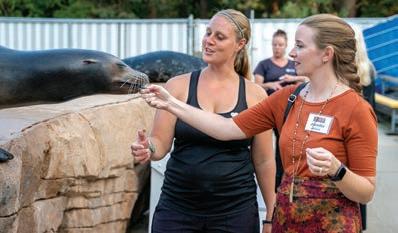

Tami Garrison was awarded the Emu Egg, one of the Society’s highest honors. Garrison is the Community Affairs Director for Molson Coors and has been on the Zoological Society Board of Directors since 2009. She most recently co-chaired Zoo Ball in June, helping the Society raise nearly $600,000 in one night. Her support and guidance have helped the Zoological Society and Zoo grow bigger and stronger each year.
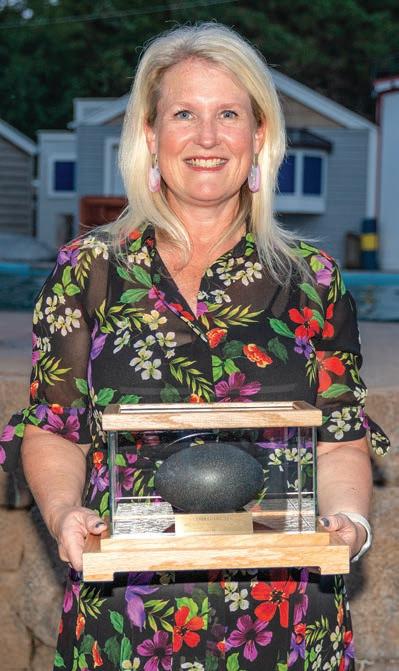
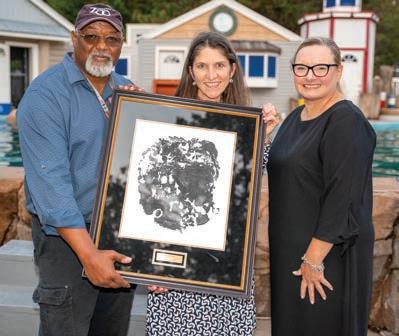
Guests of the event were treated to a special show and feeding at Ocean Connections.
Guests were invited to see the Zoo’s newest attraction, Gorilla Trek Virtual Reality Experience. This attraction opened in the summer and will be available year-round.
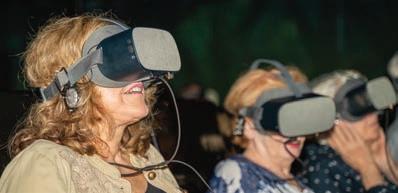

Actors have the ability to transport us into a new world. They can take us to a city, the jungle and even outer space. While their work may entertain us, there is a lot you can take away from a performance – a funny line, a motivational quote or a lesson. Kohl’s Wild Theater checks all those boxes, but it doesn’t happen by accident or overnight.
Maura PaulinaMaura Atwood and Paulina BugembeKuwahara are newly appointed actor educators at Kohl’s Wild Theater. In this role, they will not only be acting on stage, but they will also have a big hand in arming the other actors with conservation and animal information. “If all the actors are the teachers, we’re the teachers creating the curriculum,” says Atwood, who has been a part of Kohl’s Wild Theater since 2016. After a performance or during an interaction around the Zoo, children often have questions that the actor may not have thought of or been ready for. “Providing the actors with more information so we can provide an additional educational element outside of just the play is a top priority,” says Bugembe-Kuwahara.
In addition to arming the actors with more information about their musicals, Atwood and Bugembe-Kuwahara will also be creating written information for teachers booking a performance at their school.
Teachers receive a Conservation Action Guide that includes activities for the kids, questions to ask them and supplemental information about something they may have seen in the performance.
“We are trying to build off of those various standards they’re trying to teach in school (Common Core and STEAM) but use them
around the subject matter of our play.
That’s where the educator side of it comes in because we’re following actual education standards,” says Bugembe-Kuwahara.
Both actor educators have an expansive resume when it comes to acting and education. Bugembe-Kuwahara recently moved back to Milwaukee after a 10-year acting career in TV and film. They have experience teaching TV and Film in higher education and is currently teaching at UW-Milwaukee. Atwood has been seen in performances at Off the Wall, Acacia Theater, SummerStage and several others.
She currently teaches at the Milwaukee Rep. Both will be teaching theater camp next summer at the Zoo called “Let’s Get Wild: Kohl’s Wild Theater Camp.”


Kohl’s Wild Theater performs at schools, libraries, and community events yearround and inside the Zoo during the summer months. No matter where they perform, Atwood says the goal is always the same. “We as a company overall want to educate through theater and through storytelling and through engaging kids in movement and their imaginations.
Because that’s more likely to stick with them, if we tell them a story then they care about the animal.”
I f you’re looking for the red-ruffed lemurs at the Zoo, you’ll need to look in a different space. Penny, age 5, and Sirius, age 12, moved out of the Small Mammals Building and into the Primates of the World. “In the 30 years I’ve been here, there has never been a lemur species in the Primates of the World building,” says curator Trish Khan. Even though lemurs are primates, they had been living with small mammals, (which they also are). When the cotton-top tamarins in the Primates of the World Building moved down the hall into the same habitat as the Goeldi’s monkeys, Khan had a decision to make. “We had the empty space, but that space isn’t suitable for just any primate species; it had to be a right fit.” Khan made the decision to move the red-ruffed lemurs to the habitat, which also gave the ringtailed lemurs in Small Mammals a bigger home. The move was a win, win, win for all three species.
Once Penny and Sirius moved, zookeeper Mark Scheuber spent time getting them acclimated to their new space and new zookeepers. After a short time, Scheuber, Khan and other zookeepers noticed the two were getting along better, fighting less and were seen grooming each other more than they ever did in Small Mammals.
“I really think things have changed for them,” says Scheuber. Much of this change in behavior can be attributed to their new home. They have more lounging space, space from each other and more propping (logs/planks) to walk along.
The propping is connected with hooks and carabiners, something not usually done in the Zoo. “I wanted to make the exhibit modular so I can unhook everything and reroute it. We can do that a couple times a year and that would keep a lot of their brains moving. If you change the environment, that’s enrichment,” says Scheuber.
Lemurs are called prosimians, which means “before primate.” Even though they have hands – a characteristic of a primate – they don’t use them to grab their food; they only use their mouths. The red-ruffed lemurs heavily rely on their sense of smell as a way of communicating and even have special scent glands on their wrists and bottoms. They are unlike what you may think of when you hear the word primates. “They are just so unique. Even the way they move together is different from other primate species. It’s more cat-like,” explains Scheuber. See what differences and similarities you can find while watching Penny and Sirius.

Wisconsin is known as the dairy state, so it only seems fitting that the Milwaukee County Zoo houses multiple dairy cows. In late summer, the Zoo welcomed two new breeds to the Northwestern Mutual Family Farm, a brown Swiss and a Jersey. That means of the seven major milking breeds that exist, the Zoo now has five breeds – red and white Holstein, black and white Holstein, Ayrshire, brown Swiss and Jersey. “I just think it’s really cool because I don’t think people realize there are other breeds,” says assistant curator, Lisa Guglielmi. The two remaining breeds not at the Zoo are Guernsey and milking shorthorn, although through the years the Zoo has had all seven.
The two new heifers both came from farms in Wisconsin. The brown Swiss named Callie came from New Glarus, and the Jersey named Miley is from Random Lake. A heifer is a young female cow that has not had a calf yet. But, by the time you read this article, the Jersey heifer is expected to have her first calf! “Generally heifers will have their first calf by the age of 2,” Guglielmi explains. Both animals turn 2 late this year.
Callie and Miley need to be safely introduced to the other cows out in the yard.
“We introduce them slowly because they don’t know each other and they could fight and get hurt,” says Guglielmi. The same idea goes for all animals around the Zoo, as well as if you were to introduce your dog to another dog.
Once the heifers have a calf and can start producing milk, they will be milked twice a day like the other breeds and the milk will all go into one tank. The Brown Swiss and Jersey cows are bringing something a little extra special. They are known for producing milk with higher fat content, ideal for cheese-making. “You’re going to get more money if you have more fat in your milk,” says Guglielmi. The Zoo, which has the only working dairy farm in the city of Milwaukee, sells its cow milk to Cedar Grove Cheese, which also owns Clock Shadow Creamery.
A milk hauler comes to the Zoo twice per week to pick up the milk. The Zoo’s cows can collectively produce 150 pounds of milk per day, which is pretty good for the size of the farm. Plus, the higher the higher fat

• Smallest of the major milking breeds
• Black nose bordered by a white muzzle
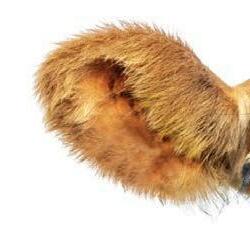

• Produce milk more efficiently than other breeds


• Believed to originate from the island of Jersey off the coast of France
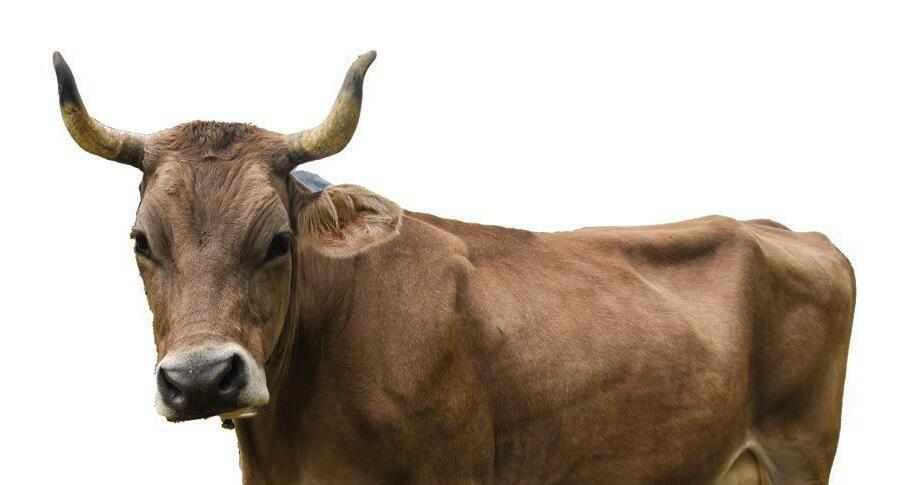
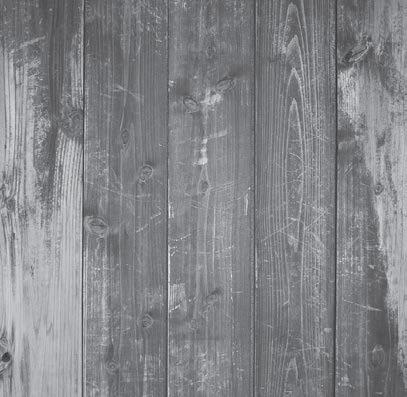
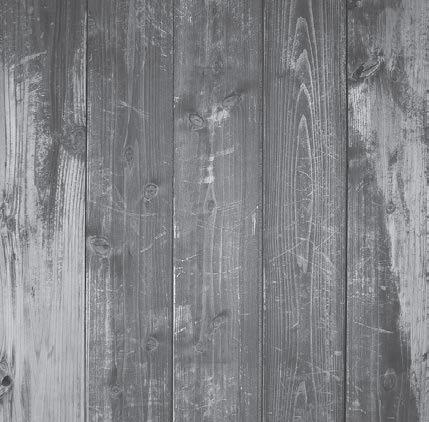
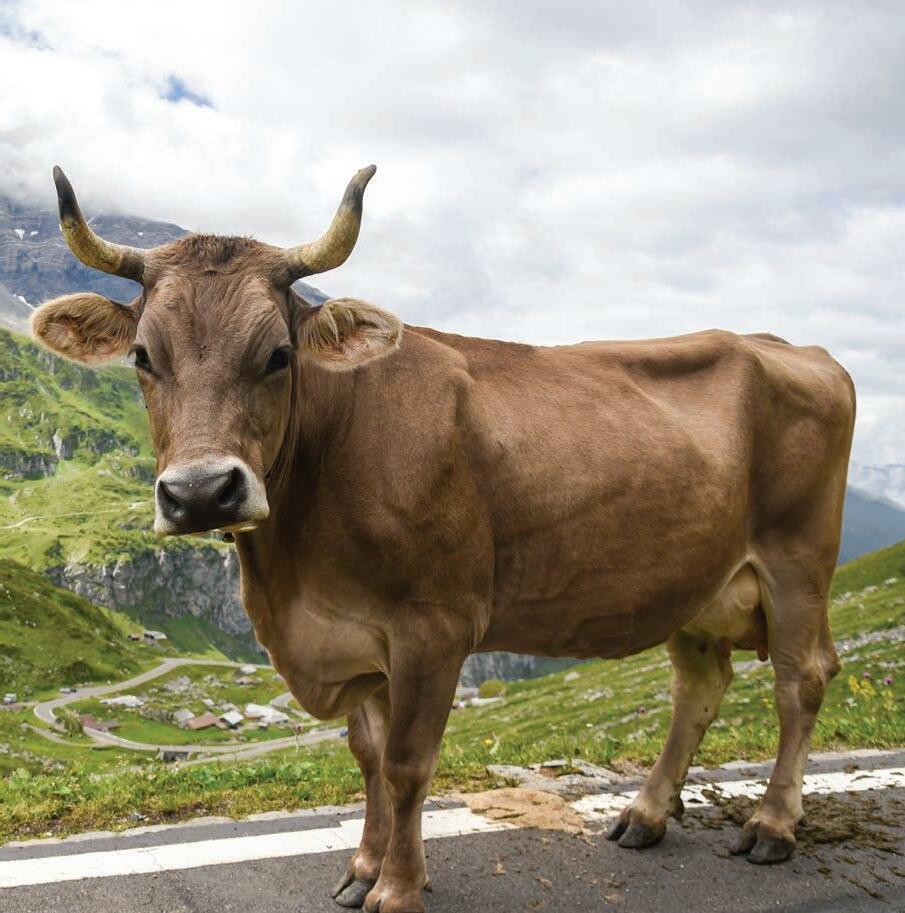
Z T X Z C K A R B T Q J S T S A Q B H Z W J N Y M F M T X D N I A C J F E P F O A O T E C V P T J V U S X U G I T E V R Z D Z V V I X M W E I R U H V X A J V W F B M R K B P Y Z U I P M N H C R H O L S T E I N C R V W X A G Z L I Y P U J G D E D O F Q Y X A M B E V E C I G M R Y Y T V D E H A B R U K P K B V A P D T Q R B Y S R U P D I C H E E S E N V Y E F K Q L H L N F Q B S T W N Y I M Y C A D W F O E N S V C L S K V R F R U U Z H H E I F E R
Can you find these words related to the Zoo’s dairy cows?Hay Milk Cheese Jersey Brown Holstein Breed Farm Heifer
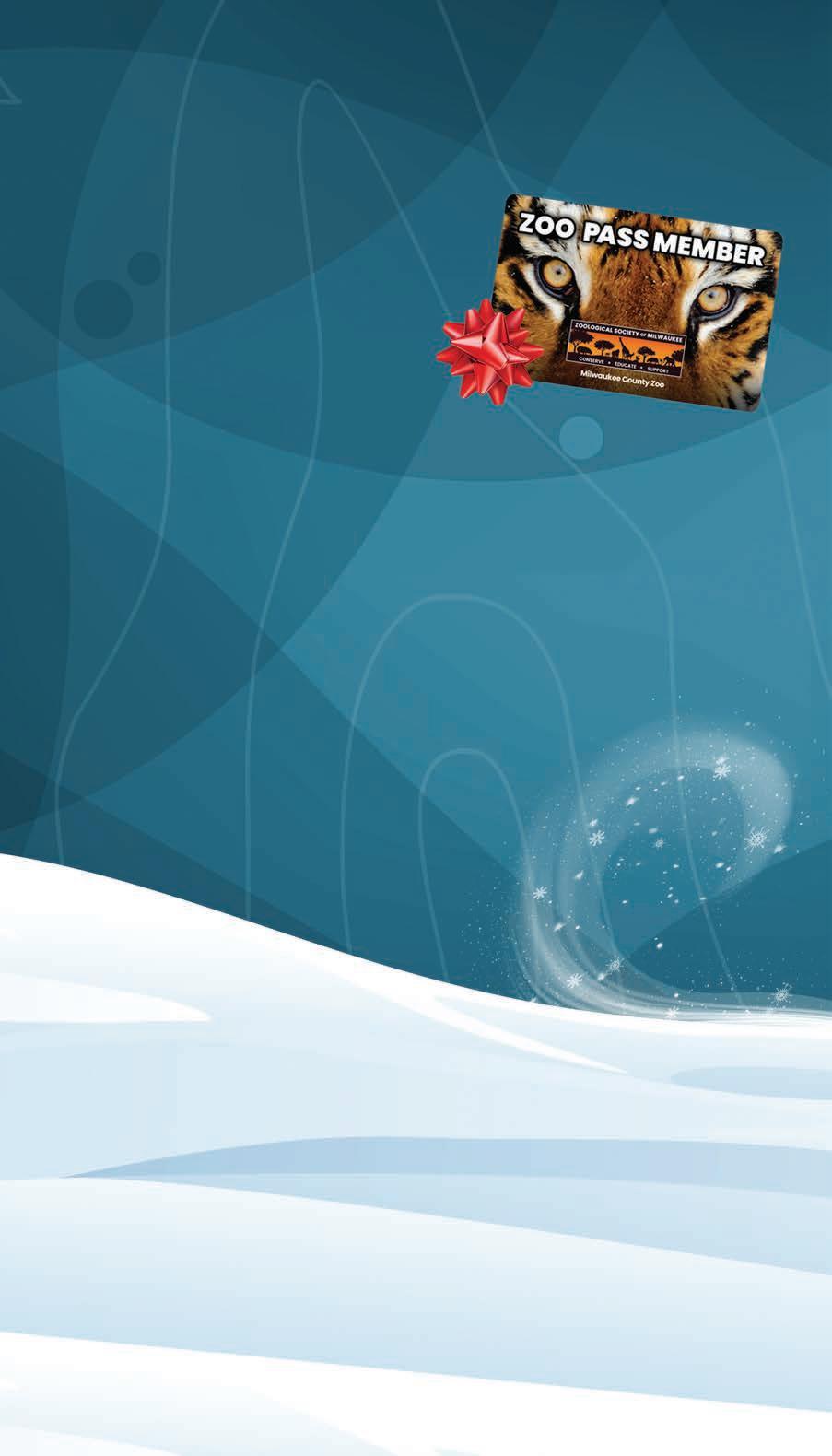
It’s double the cuteness in the giraffe habitat. This year, the Zoo welcomed two baby giraffes. The female, Poppy, was born in May to mom Marlee. Her claim to fame is her birth was during Memorial Day Weekend. The general public had the opportunity to vote on her name and, and they chose a symbol of Memorial Day – the poppy. Fast forward to August when male Asante was born to mom Ziggy. His claim to fame revolves around his fast birth during the day, in front of Zoo guests. Ziggy was only in labor for about 40 minutes before Asante dropped into the world.
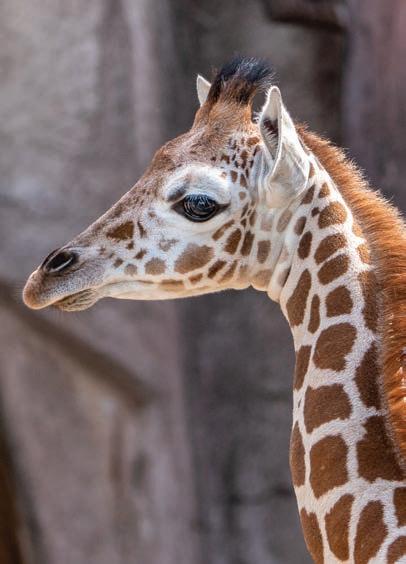
It’s too hard for us to pick which giraffe should be available for our limited-time animal sponsorship, so we are making you decide. Sponsor Poppy or Asante for $50 each and receive a plush-toy giraffe, a fact sheet, a sticker featuring your giraffe, your name on display for a year and an invitation to a behindthe-scenes event in August. If you can’t decide which one to sponsor either, you can always sponsor both! Go to zoosociety.org/SponsorAnimal or call 414-258-2333.
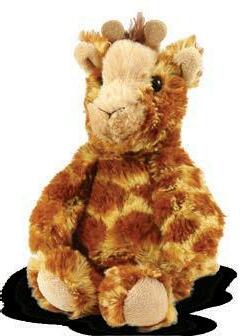

Undecided? Consider purchasing
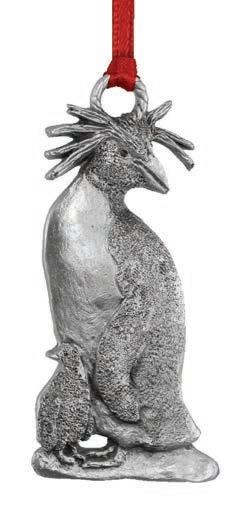
this year’s
and
couldn’t be more excited. The ornament,
Class or Camp, an
Snooze at the
in any amount. Go to zoosociety.org/GiftCard.
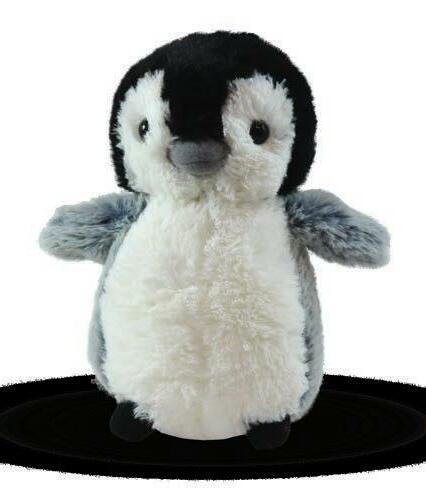
A pack of dwarf mongoose can go up to 32. Learn more about the Zoo’s dwarf mongooses on page 8.
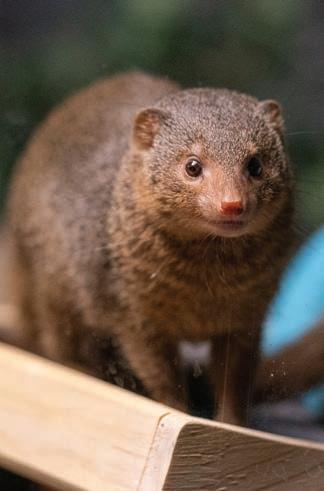
Nov. 5
Family Free Day, sponsored by North Shore Bank & FOX6* Nov. 9 Member registration for Spring Zoo Classes

Nov. 12
Zumba® Fitness Party at the Zoo (pre-register)

Nov. 24 Thanksgiving Day, the Zoo will be closed Dec. 1-4, 7, 10-11, 14-23, and 26-31
Wild Lights, powered by We Energies (pre-register for a member discount)
Dec. 3
Family Free Day, sponsored by North Shore Bank & FOX6* Dec. 25
Christmas Day, the Zoo will be closed
Jan. 1
New Year’s Day, the Zoo will be closed
Jan. 7
Dec. 8 & 9
Cheers!, sponsored by North Shore Bank 21+ nights at Wild Lights Dec. 1-31
Fantastic Forest, sponsored by Hawks Landscape
Family Free Day, sponsored by Tri City National Bank & FOX6*
Jan. 15
Samson Stomp & Romp, sponsored by Prairie Farms Dairy (pre-register)